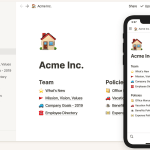Introduction.
Successful traders understand the importance of meticulous record-keeping and continuous self-improvement in the fast-paced world of trading.
Keeping a trading journal is a valuable practice that can provide insights into your trading strategies, track your progress, and help you make data-driven decisions.
Notion, with its flexible and customizable workspace, provides an ideal platform for creating a comprehensive trading journal that suits your unique trading style and preferences.
In this article, we will explore how to create a trading journal in Notion, empowering you to document and analyze your trades, identify patterns, and refine your trading strategies.
By leveraging the features of Notion, such as tables, databases, and customizable templates, you can create a dynamic and organized trading journal that captures the essential details of each trade and facilitates easy analysis.
Whether you’re a beginner looking to establish a solid foundation or an experienced trader seeking to fine-tune your approach, a trading journal in Notion can serve as a powerful tool for self-reflection, learning, and growth.
By documenting your trades, emotions, and observations, you can identify strengths, weaknesses, and areas for improvement, ultimately enhancing your trading skills and results.
So, let’s delve into the world of creating a trading journal in Notion and unlock the potential for continuous improvement and success in your trading journey.
Hey there, dear reader! We hope you’re enjoying the content on our blog. Did you know we have a treasure trove of other insightful articles waiting for you?
Checkout the links to the article below to become more productive and scale your Notion experience.
- How To Make Money Selling Notion Templates
- How To Make Money Online With Notion
- How To Make Money With Notion Templates
- How To Become a Notion Consultant
- How To Personalize Notion
- How To Use Notion For Social Media Management
- How To Sell Notion Templates On Etsy
- How To Build a Website On Notion
- How To Build Your Portfolio On Notion
- How To Use Notion For Personal Use
- How To Use Notion For Research
Note: To create a trading journal in Notion, ensure that you have access to the Notion app or web version.
How To Create a Trading Journal In Notion?
Notion, with its versatile features and customizable workspace, provides an ideal platform for creating a comprehensive and tailored trading journal.
In this article, we will guide you through the process of creating a trading journal in Notion, enabling you to capture the essential details of your trades, document your observations, and gain valuable insights into your trading strategies.
By leveraging Notion’s tables, databases, and templates, you can create a dynamic and organized journal that suits your trading style and goals.
Whether you’re a novice trader starting your journey or an experienced professional seeking to refine your skills, a trading journal in Notion can become an indispensable companion in your quest for trading success.
By recording your trades, analyzing your performance, and identifying patterns, you can enhance your decision-making abilities and optimize your trading strategies.
Step 1: Define Your Trading Journal Structure.
The first step in creating a trading journal is to determine its structure. Consider the key elements you want to include, such as trade details, entry and exit prices, timeframes, trade rationale, and emotions experienced during the trade.
Plan how you want to organize this information in your journal to facilitate easy tracking and analysis.
Step 2: Set Up a Notion Database.
In Notion, create a new database specifically for your trading journal. Define the necessary columns based on the elements you identified in the previous step.
These columns can include trade date, symbol, entry and exit prices, position size, profit/loss, and any other relevant information. Customize the database to suit your preferences and trading style.
Step 3: Document Your Trades.
Once your trading journal database is set up, start documenting your trades. Enter the trade details into the corresponding columns for each trade you make.
Include all relevant information, such as trade direction, stop-loss levels, take-profit levels, and any additional notes or observations. Be consistent and diligent in recording each trade.
Step 4: Add Analysis and Reflection.
In addition to trade details, utilize Notion’s capabilities to add analysis and reflection to your trading journal.
You can create additional columns or sections to record your thoughts on trade outcomes, lessons learned, and areas for improvement. Include charts, screenshots, or external links to further enhance your analysis and review process.
Step 5: Review and Analyze.
Regularly review and analyze your trading journal to extract valuable insights. Look for patterns, identify successful strategies, and pinpoint areas that require improvement.
Use filters and sorting options in Notion to compare trades based on specific criteria, such as timeframes or profitability. This analysis will help you refine your trading approach and make informed adjustments.
Step 6: Continuously Update and Evolve.
A trading journal is an ongoing project, so make it a habit to update it regularly. Capture each trade promptly and maintain consistency in your documentation.
As you progress in your trading journey, adapt your trading journal structure to accommodate new insights or additional data points that you find valuable for analysis.
Conclusion.
Creating a trading journal in Notion is a powerful practice that can significantly contribute to your trading success.
By documenting your trades, analyzing your performance, and reflecting on your decisions, you can continuously improve your trading strategies and achieve consistent results. With
Notion’s flexibility and customization options, you have the freedom to create a trading journal that aligns with your unique trading style and preferences.
Hey there, dear reader! We hope you’re enjoying the content on our blog. Did you know we have a treasure trove of other insightful articles waiting for you?
Checkout the links to the article below to become more productive and scale your Notion experience.
- How To Make Money Selling Notion Templates
- How To Make Money Online With Notion
- How To Make Money With Notion Templates
- How To Become a Notion Consultant
- How To Personalize Notion
- How To Use Notion For Social Media Management
- How To Sell Notion Templates On Etsy
- How To Build a Website On Notion
- How To Build Your Portfolio On Notion
- How To Use Notion For Personal Use
- How To Use Notion For Research
So, start building your trading journal in Notion today and embark on a journey of self-reflection, growth, and optimization in your trading endeavours. Happy trading!






GIPHY App Key not set. Please check settings